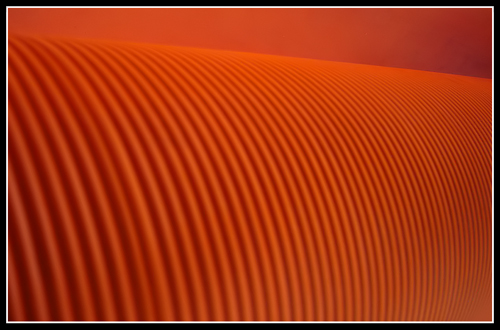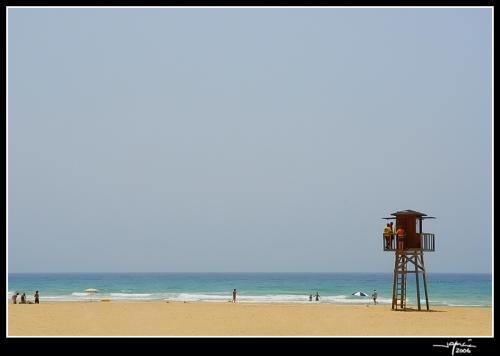El artículo en español ha sido traducido al inglés por mi amigo Simon.
According to the Royal Spanish Academy a Decalogue is a set of rules, not necessarily ten in number, or advice which is basic in order to carry out any activity.

1.Study the camera’s instruction manual. We should master the functions of the instrument with which we are going to take photographs.
2. Don’t use sunglasses while taking photos.
3. Use the maximum resolution of the camera. If possible use RAW.
4. Bear in mind the considerable limitations of the built in fill-in flash of the camera.
5. With each download of photos (card-PC) make a back up copy
6. Archive the photos by category and in chronological order.
7. Never apply any post processing to the original photo; use a copy.
8. Be careful how we hold the camera. Fingers should never cover the flash or auto focus assist lamp.
9. Avoid the use of a compact camera’s digital zoom.
10. To save battery power leave the LCD screen turned off.
11. Before a photo session make sure the batteries are fully charged. A spare battery is recommended.
12. Hold the camera firmly with both hands and with elbows held against the body. Sometimes it may be necessary to lean on something, kneel down or even lie down on the floor.
13. Press the shutter button gently to avoid any loss in clarity of the image.
14. Before beginning a photo session make sure the memory cards are empty.
15. Take time to observe and select the frame. Avoid elements which do not provide information/beauty to the image.
16. Take various shots from different angles when we find an interesting subject.
17. With compact cameras be careful with the border details as what is seen on the screen is not the same as what will be taken through the lens (parallel error)
18. Avoid inclined horizons. Hold the camera straight at the moment of shooting.
19. Do not reject vertical format shots.
20. The best light can be had at the early morning and late evening hours. Avoid the midday sun.
21. Overcast/cloudy days provide a diffuse light which is ideal for portrait and landscape shots.
22. Avoid the Bull’s-Eye Effect.
23. Understand the Rule of Thirds and the Golden Ratio.
24. Bear in mind the rule of sight.
25. Consider the rule of movement.
26. Apply in most shots the rule of the horizon.
27. Use Vanishing Point as a photographic resource to improve our compositions.
28. Make use of Patterns in our compositions.
29. Assure that the photographer’s shadow does not enter the image.
30. Use a tripod when using shutter speeds slower than 1/80 sec.
31. In portraits:
- Always focus the eyes of the model.
- Get as near as possible in order to show all the facial details.
- Try to obtain a pose or expression which is characteristic of the model.
- Use balanced lighting (a light source each side of the model) to avoid shadows and so as to not emphasize facial wrinkles.
- Don’t cut the image off at a joint (knee, ankle, waist)
- Look for naturalness. Keep the models occupied.
32. Child photography:
- Try to have an assistant to prepare and chat with the child, to show him/her something of interest, to provide something which attracts the attention so as to distract the child while we shoot. The objective is to capture spontaneous expressions.
- The camera should be at the height of the child
- Get as near as possible to the child
- Use fast shutter speeds (above 1/250 sec) to avoid blurred images.
- Add toys or other brightly coloured objects to the scene.
- Look for simple backgrounds.
- Make use of the continuous shooting mode of the camera in order to take many photos in a short period of time.
- Look for shots with the sun behind, diffuse lighting, and overcast days to capture the soft complexion of children.
- Never place the child facing the sun.
- A small lack of clarity of the hands or feet emphasizes the sensation of movement.
33. In landscape shots include objects in the foreground to frame the landscape and to give the impression of perspective.
34. In panoramic shots include people, which will serve as a reference and make the viewer feel part of the scene.
35. In snowy landscapes we should open the diaphragm up to two points in order to achieve a brilliant, white snow. The excessive reflected light would mislead the photometer and so if not we would obtain dark photographs with grey snow.
36. Bear in mind negative space as a photographic resource.
37. Examine the background before shooting. We should look for neutral backgrounds and if possible, they should be out of focus in the image. The idea is to avoid confusing backgrounds which steal attention from the subject of the photo.
38. The built-in flash is useful as a fill in light source in exterior shots for photos taken at midday and in general when the sun produces annoying shadows on the face of the model.
39. For the majority of users who generally make copies of size 10×15, a camera of 3.2 megapixels is more than sufficient.
40. Be careful on the beach. Salt water and sand are dangers for the camera.
41. Make sure the main subject of the photo is precisely focussed.
42. Try to take photos which attract our attention and show just one idea, without unnecessary details (to achieve this simplicity get close to the subject and choose a simple background).
43. A cut exists as a photographic resource but this shouldn’t be confused with involuntary cuts. We should avoid cuts of the head and feet.
44. Look after your equipment:
- The lenses, filters, and the sensor (see sensor cleaning) should be clean and free from dust and fingerprints.
- Avoid extreme temperatures. For example, don’t leave your equipment inside the car and in the sun.
- Transport equipment in a rucksack or an appropriate bag (padded and isolated from humidity). LowePro are recommended.
- On plane journeys use rigid cases for the equipment. With new security measures we cannot take our equipment on board as hand luggage in the rucksack).
45. View and study the works of masters using internet, books, museums, expositions. Ask yourself: Why does this image captivate me?
46. Take advantage of the non-contemporary look of black and white and sepia prints.
47. During the photo session (be it interior or exterior) we should not feel rushed.
48. Look for information in internet. Everything can be found there.
49. Don’t be afraid to experiment with your photographic equipment.
50. Practise, practise, practise.
Contributions from the friends of jggweb:
1. Check the ISO value before shooting.
2. In order to achieve the correct exposure make use of exposure compensation.
3. A tripod is essential when using long focal ranges or slow shutter speeds.
4. When using a zoom select a minimum shutter speed of half the focal distance.
5. When taking travel photographs of journeys we should get close to the subject; that is the traveller. The monument will appear as a frame, as the scene of the adventure. So we will avoid the typical photo with far off (miniscule) subjects and the monument as the background.





















